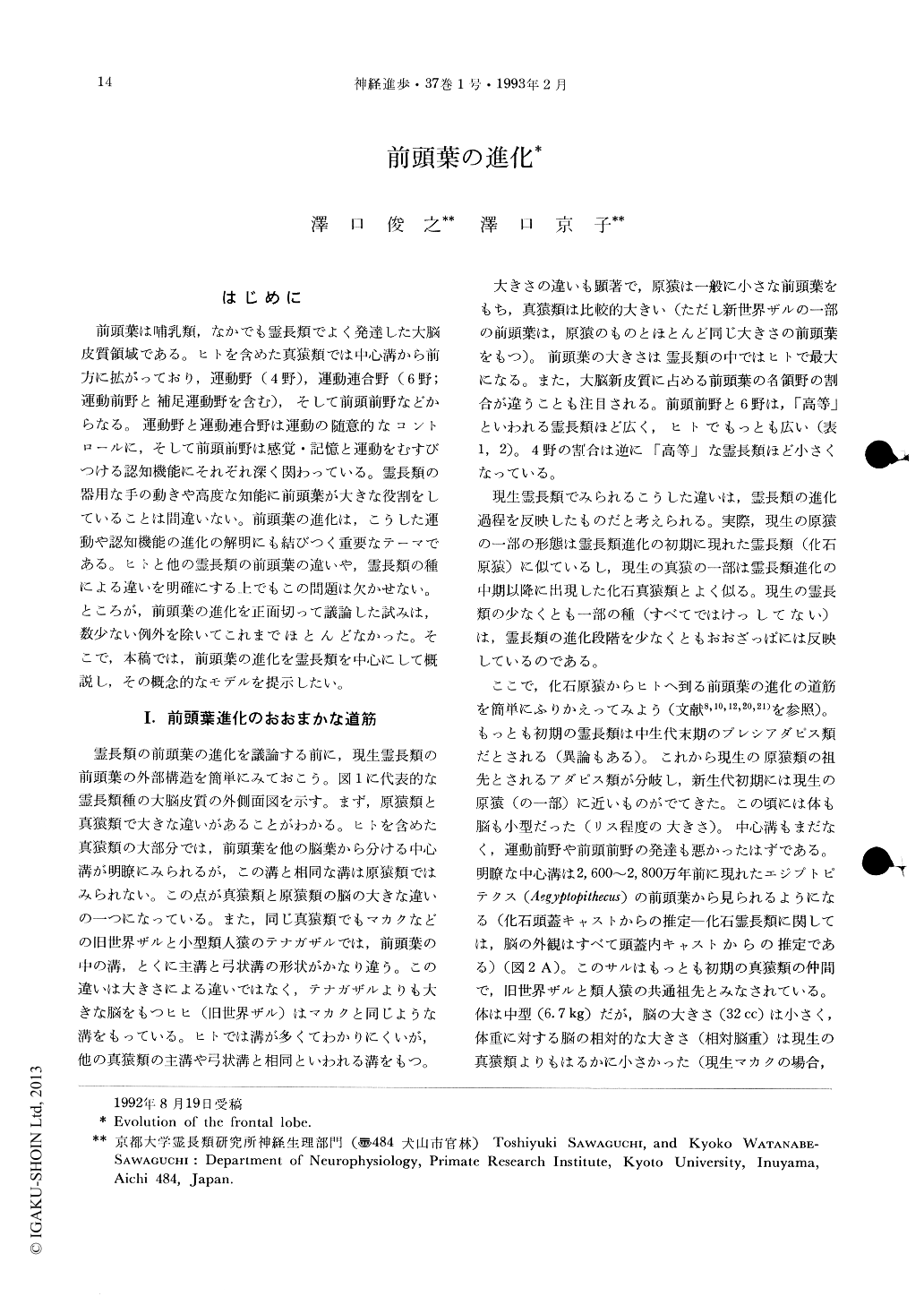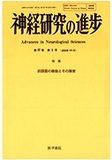Japanese
English
- 有料閲覧
- Abstract 文献概要
- 1ページ目 Look Inside
はじめに
前頭葉は哺乳類,なかでも霊長類でよく発達した大脳皮質領域である。ヒトを含めた真猿類では中心溝から前方に拡がっており,運動野(4野),運動連合野(6野;運動前野と補足運動野を含む),そして前頭前野などからなる。運動野と運動連合野は運動の随意的なコントロールに,そして前頭前野は感覚,記憶と運動をむすびつける認知機能にそれぞれ深く関わっている。霊長類の器用な手の動きや高度な知能に前頭葉が大きな役割をしていることは間違いない。前頭葉の進化は,こうした運動や認知機能の進化の解明にも結びつく重要なテーマである。ヒトと他の霊長類の前頭葉の違いや,霊長類の種による違いを明確にする上でもこの問題は欠かせない。ところが,前頭葉の進化を正面切って議論した試みは,数少ない例外を除いてこれまでほとんどなかった。そこで,本稿では,前頭葉の進化を霊長類を中心にして概説し,その概念的なモデルを提示したい。
Among living mammals the frontal lobe is the most fully developed in primates, in particular, humans. This lobe of primates contains the primary motor (area 4), premotor (area 6) and prefrontal cortices, being involved in control of voluntary movement and some cognitive functions, such as working memory, for guiding behaviors. In the present article, we have discussed evolution of the frontal lobe from fossil evidence and comparative studies of the frontal cortex among living primates, thereby proposing a conceptual model of evolution of the primate frontal lobe.
From fossil evidence, one can see that the frontal lobe has been largely expanded during the course of primate evolution. The frontal lobe of early primates, that lived in early Tertiary, was similar in size and sulcal pattern to that of some living prosimians such as bush babies; their frontal lobes were relatively small and did not have the central sulcus that characterizes the frontal lobe of simians. The frontal lobe with the central sulcus can be seen in one of the oldest-known simians, Aegyptopithecus, that lived in 26-28 million years ago. This fossil simians is considered to be the common ancestor or its close relative of Old World monkeys and hominoids, although the size of its brain is much smaller than that of most living simians. It is likely that the frontal lobe of Aegyptopithecus was the common origin or base of frontal lobes of Old World monkeys and hominoids. From the time of Aegyptopithecus, the frontal lobe has been largely expanded for lineage of either Old World monkeys or hominoids. In the lineage of Old World monkeys, the frontal lobe similar to that of living ones appeared at least 10 million years ago. For example, an Old World monkey, Mesopithecus, that lived 9 million years ago, had the frontal lobe similar in size and sulcal pattern to that of living Old World monkeys. In the lineage of hominoids, the frontal lobe has been drastically expanded until the appearance of modern humans at 0.2 million years ago. Being accompanied with this evolutionary expansion in hominoids, some cortical areas, such as Broca's area, appear to have been added in the frontal cortex. Furthermore, for lineage of either Old World monkeys or hominoids the evolutionary expansion of the frontal cortex has been uneven across its different areas: prefrontal and premotor cortices appear to have been more largely expanded, compared to the primary motor cortex.

Copyright © 1993, Igaku-Shoin Ltd. All rights reserved.


